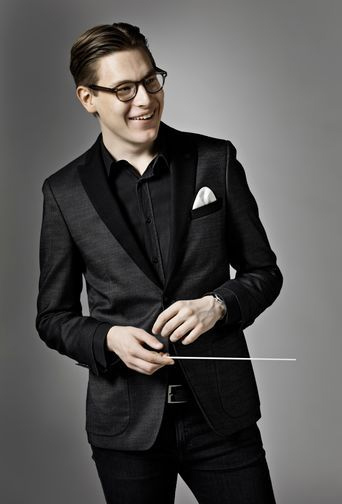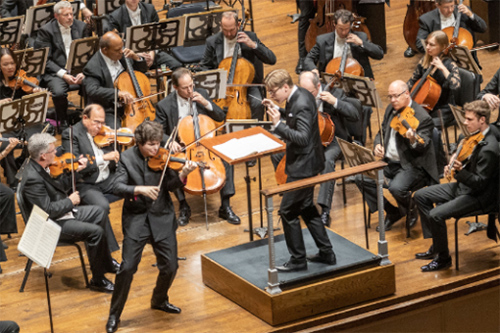by Daniel Hathaway

Mäkelä made only a single program substitution: Olivier Messiaen’s Les offrandes oubliées opened Thursday’s program in place of Louis Andriessen’s Agamemnon. An early work from 1930 suffused with Roman Catholic mysticism, its three movements — The Cross, Sin, and The Eucharist — are meditations on Christ’s “Forgotten Offering” of himself for human salvation. The outer movements are lulling and slow-moving, but the middle one no doubt caused more than a few cases of whiplash when it began in a sudden explosion of percussion. Mäkelä led a riveting performance, unhurried in ruminative movements and powerfully ugly in its portrayal of sin.
The excellent Augustin Hadelich joined Mäkelä and the Orchestra in a gripping traversal of Prokofiev’s Second Violin Concerto. Playing with a rich, burnished tone, and staying closely in touch with the podium, Hadelich entered into expressive conversations with his orchestral colleagues, including a strangely wonderful duet with bass drummer Mark Damoulakis. The energy of his playing never flagged in the third movement’s non-stop waltz. He charmed the audience — well-populated with students — into a warm ovation and responded with an unpretentious encore borrowed from the classical guitar world: Tárrega’s Recuerdos de la Alhambra.

His approach to the Beethoven inspired the Cleveland Orchestra musicians to lay down their instruments at the end and join the audience in riotous applause. That doesn’t happen every day.
Photos: Heikki Tuuli, Suziao Yang
Published on ClevelandClassical.com October 23, 2019.
Click here for a printable copy of this article



